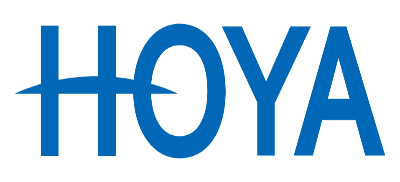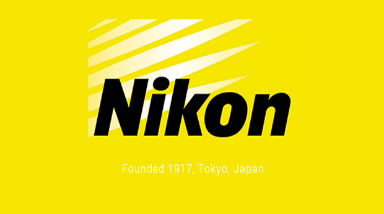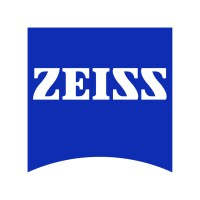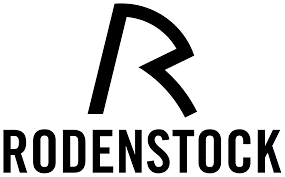Top 5 Trends in Global Prescription Lens Market: key Companies, Growth, Innovations and Market Insights
RELEASE DATE: Mar 2025 Author: Spherical Insights Request Free Sample
The global industry that designs, manufactures, distributes, and sells lenses that are specially prescribed to treat refractive errors or vision impairments is known as the prescription lens market. These lenses are usually customized to meet each person's specific vision requirements, which are identified by an ophthalmologist or optometrist after an eye inspection. The increasing frequency of refractive errors, the rising number of awareness campaigns, and the increasing number of product releases are the main factors driving the growth of the prescription lens market.
Global Prescription Lens Market Size
"The Global Prescription Lens Market is expected to grow from USD 46.8 Billion in 2023 to USD 77.7 Billion by 2033, at a CAGR of 5.20% during the forecast period 2023-2033."
Top 5 Trends in Global Prescription Lens Market
1. Increasing number of refractive errors
The rising incidence of refractive errors is one of the key factors driving the prescription lens market's demand. Furthermore, the aging population is anticipated to contribute to a rise in the number of people in need of corrective lenses as life expectancy continues to rise. All of these elements work together to continuously increase demand for premium prescription lenses that can meet a variety of vision requirements.
2. Eco-Friendly and Sustainable Perspectives
The market for prescription lenses is not an exception to the growing concern over sustainability in many businesses. Customers are calling for more environmentally friendly products, such as lenses made of sustainable materials, as environmental issues gain more attention on a global scale. Moreover, producers are spending money on procedures that lessen the negative effects of lens production on the environment, such as using less hazardous chemicals in lens coatings and more energy-efficient manufacturing techniques.
3. The emergence of lenses which reflect blue light
Blue light-blocking lenses are becoming more and more popular as people become more conscious of the negative consequences of blue light exposure from digital devices. Digital eye strain, which is on the rise as a result of people using computers, smartphones, and other electronic devices more frequently, is known to be exacerbated by blue light. Blue light blocking lenses are made to block out damaging blue light wavelengths, which lowers the possibility of headaches, sleep disruptions, and eyes feeling exhausted.
4. Growing Interest in Progressive and Multiple Lenses
As the population ages, there is an increasing demand for multifocal and progressive lenses worldwide. The purpose of multifocal lenses, which include progressive lenses, is to provide several focal points in a single lens so that people can see well at different distances. These lenses improve visual comfort for people with age-related vision problems by offering a smooth transition between various focus lengths.
5. Including Smart Optics Technology
Prescription lenses are increasingly incorporating smart technology due to advancements like augmented reality (AR) lenses and lenses with integrated sensors. These smart lenses are made to give users access to real-time data without requiring further devices, including notifications, health metrics, and navigational guidance.
List of Key Companies
- HOYA Corporation
- Nikon Corporation
- Carl Zeiss Meditec AG
- Rodenstock gmbH
- Seiko Optical Products Co. Ltd.
- ZEISS International
- Shamir Optical Industry Ltd.
- GKB Optics
- Johnson and Johnson
- Vision Ease
- Marcolin
- Vision ease
- Essilor
- Fielmann Ag
- Others
Top 5 Companies Profile
1. Hoya Corporation

Headquartered: Shinjuku City, Tokyo, Japan
The medical technology business Hoya Corp. (Hoya) produces and markets instruments and precision devices based on its cutting-edge optical technologies. Contact lenses and eyeglasses, laparoscopic surgical instruments, medical endoscopes, intraocular lenses, orthopedic implants, airway scopes, semiconductor blanks and photomasks, liquid crystal display (LCD) panel photomasks, and glass disks for HDDs are among its main products. Imaging products include optical lenses and glasses, camera lens modules, plastic lenses, laser equipment, and ultraviolet (UV) light sources. Glass formation, glass melting, molding, polishing, thin film, lithography, optics design, and optomechatronics are some of its fundamental technologies.
2. Nikon Corporation

Headquartered: Minato City, Tokyo, Japan
Nikon Corp (Nikon) is an optical instrument producer, distributor, and marketer. The business sells FPD lithography systems as well as semiconductor lithography solutions. Digital cameras with interchangeable lenses, laser rangefinders, surveying tools, mirrorless cameras, sport optics, speed lights, action cameras, and small digital cameras are among its products. In addition, the company develops and produces industrial microscopes, metrology systems, X-ray/CT inspection systems, biological microscopes, and cell culture observation systems. Nikon offers services and equipment for retinal diagnostic imaging. It also sells ophthalmic lenses, glass, encoders, and space-related items.
3. Carl Zeiss Meditec AG

Headquartered: Jena, Germany
One of the biggest medical technology corporations in the world, Carl Zeiss Meditec is divided into two business segments: microsurgery and ophthalmic equipment. OPT comprises surgical ophthalmic devices, ophthalmic diagnostic equipment, intraocular lenses, disposable medical devices, and refractive lasers. Zeiss holds the second-largest position in the industry with a market share in the low teens. In neurosurgery, spine surgery, and otolaryngology surgery, MCS is made up of implants, surgical tools, and imaging systems.
4. Rodenstock GmbH

Headquartered: Munich, Germany
Rodenstock is a leading producer of eyeglass lenses and a leader in medical technology, representing the pinnacle of German engineering. With the motto B.I.G. VISION FOR ALL, Rodenstock represents a new generation of individual spectacle lenses and can boast several ground-breaking inventions and industry-leading technology. The company, which was founded in 1877 and has its headquarters in Munich, Germany, employs about 5,000 people worldwide and has sales offices and distribution partners in more than 85 countries. To ensure a worldwide supply, Rodenstock keeps six major production hubs.
5. Seiko Optical Products Co. Ltd.

Headquartered: Ginza, Chuo, Tokyo, Japan
Seiko Group Corp. (Seiko Group) manufactures timepieces. It produces and markets clocks, watches, electronics, semiconductors, clothing, and accessories. The business also sells printers, optical lenses and frames, shutters for cameras, hard disk drive parts, wireless communication devices, apparel, and other items. Additionally, Seiko Group offers system integration and information technology services. It sells products under several brands, including Grand Seiko, Seiko, Prospex, and Seiko Premier.
Conclusion
The prevalence of myopia is on the rise, technological advancements in lens materials and coatings are driving significant changes in the global prescription lens market, the aging population's need for presbyopia correction, the growing demand for sustainable products, and the growing popularity of online eyewear retail are all factors driving the growth of prescription lens market.
About the Spherical Insights & Consulting
Spherical Insights & Consulting is a market research and consulting firm which provides actionable market research study, quantitative forecasting and trends analysis provides forward-looking insight especially designed for decision makers and aids ROI.
Which is catering to different industry such as financial sectors, industrial sectors, government organizations, universities, non-profits and corporations. The company's mission is to work with businesses to achieve business objectives and maintain strategic improvements.
CONTACT US:
For More Information on Your Target Market, Please Contact Us Below:
Phone: +1 303 800 4326 (the U.S.)
Phone: +91 90289 24100 (APAC)
Email: inquiry@sphericalinsights.com, sales@sphericalinsights.com
Contact Us: https://www.sphericalinsights.com/contact-us